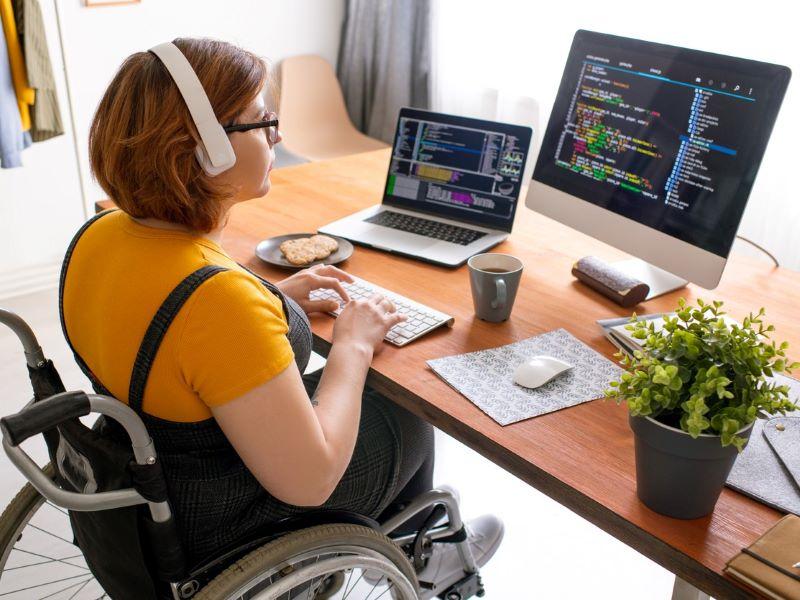
How to support individuals with hearing loss at your institution
Many people with hearing impairments do not think they need support. Here are some ways to provide it
You may also like
Popular resources
The World Health Organisation estimates that more than 1.5 billion people worldwide currently live with some form of hearing loss. It expects this number to increase dramatically to one in four of the global population by 2050.
Despite its prevalence, our understanding of how to support people with hearing loss is lacking in higher education. While universities are addressing support for academics with hearing impairments through equality, diversity and inclusion policies, there is still a large and essentially invisible community of people that this strategy does not serve.
Individuals belonging to this community are not easily identifiable as people needing support. This is due to the fact that hearing impairments are often invisible and largely ignored because society sees certain levels of hearing loss as part of the natural ageing process. Consequently, many people with hearing impairments do not think they need support. The word impairment has connotations that academics generally do not want to be associated with. For this reason, it is important to offer appropriate support to those who have hearing loss but who do not want to be singled out.
Futureproofing careers for academics with hearing impairments
As more people survive into old age, and more academics choose to work beyond retirement age, the number of academics with hearing loss and other impairments will continue to rise. We need to acknowledge the issues related to an ageing workforce and introduce policies and training practices that help academics adapt the way they work in order to continue participating in teaching and research for as long as they like. Those in leadership positions will need support on how to deliver effective line management to these people.
- Resource collection: Routes to improving disability support in higher education
- Where are the leaders with a disability in higher education?
- How to improve digital accessibility at your institution
Making adjustments to improve sound quality
Aside from hearing aids, people with hearing impairments rarely have outward signs of their impairment. Since many do not identify as having impairments, we should incorporate all-inclusive strategies to ensure sound quality because, while it may sound like a contradiction, most people with hearing impairments still rely on their hearing, and it is often the sound quality that causes issues.
Therefore, we need to adjust environments to reduce extraneous noises and make the sound that we want people to hear in classrooms and meeting rooms clearer. We can do this by reducing the number of hard surfaces in classrooms and lecture halls because these reflect sound. Carpeted floor and cushioned materials on floors and ceilings of teaching rooms similar to cinema screening rooms help, as does having lower ceilings.
For online meetings or classes, we must invest in high-quality equipment that promotes sound clarity. We should also ensure we provide clear information in a variety of forms. Examples include audio-visual and sound recordings using high-definition sound files that increase the clarity of sound. We must also encourage the use of captions and the recording feature during lectures. Finally, portable technology that has clear visual or high-quality audio and improves access for people with hearing impairments should be seen as mainstream and not simply designed for a small section of the academic body.
Creating online communities
In 2015, I set up a course to support neurodiverse staff and students with hearing and visual impairments at the London School of Economics. As part of this intervention, I, along with others, also set up a virtual learning environment that contained learning resources, lecture recordings and a bulletin board that anyone who wanted to contribute to could control.
When we evaluated the course, we examined face-to-face attendance data and engagement data from students and staff who had accessed the learning materials and discussed the materials and tips and tricks posted on the bulletin board online. Rather embarrassingly, my lectures were less popular than the online recordings and the learning materials – and, even more embarrassingly, the resources and recordings were much less popular than the bulletin boards.
What I learnt from this evaluation was that people with impairments and neurodiversity want to control their own access to teaching and learning more than they want to be handed information and strategies by academics like me. Since then, I have encouraged participatory practices that include providing online platforms that act as blank canvases for communities to provide their own access tips and tricks and recommend apps and technology.
I have also set up projects in which the first thing my colleagues and I do is listen to people from diverse backgrounds with a range of impairments and neurodiversity, and we always start by asking these diverse groups what online content and what means of learning they recommend. It is not always easy and there are always clashes and tensions. However, what is produced is unfailingly better than what we had previously produced without participants’ input.
Addressing the needs of individuals with hearing loss in higher education should be high up on your institution’s agenda. The invisible nature of hearing impairments underscores the importance of implementing inclusive strategies that go beyond traditional equality and diversity policies. Creating supportive environments with improved sound quality in classrooms and meeting spaces, both physical and virtual, is crucial, and fostering online communities can empower individuals with hearing impairments to control their own access to teaching and learning.
Simon Hayhoe is an associate professor of special educational needs, disability and inclusion.
If you would like advice and insight from academics and university staff delivered direct to your inbox each week, sign up for the Campus newsletter.




